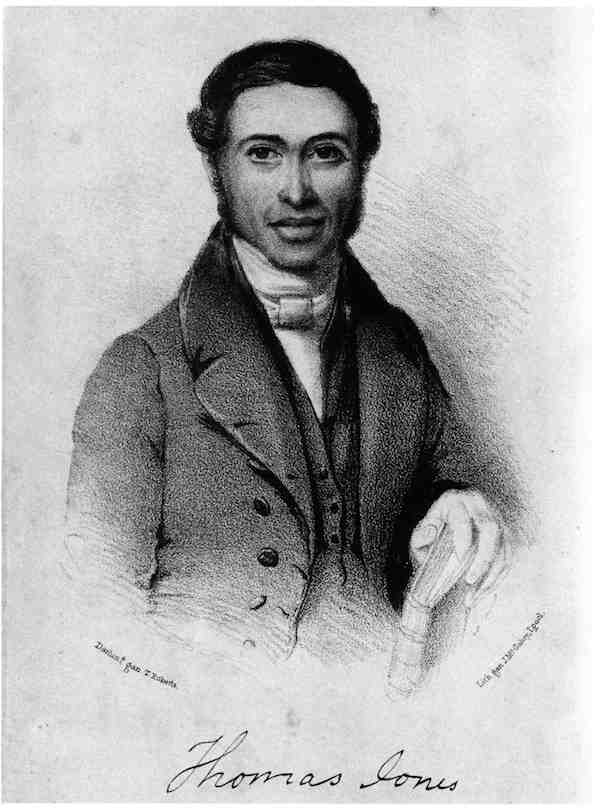Rev. Thomas Jones is a key figure in the missionary activities in North-East India. His chief contribution is the introduction of the Roman alphabet to the Khasi language (Andrew May calls for a more nuanced treatment of this claim that considers the contribution of the Serampore missionaries such as Krishna Chandra Pal and Alexander Lish - see Grimshaw, pp. 89-91). Jones translated the Lord's Prayer into Khasi and then wrote the Khasi First Reader after which he went on publish more works in Khasi such as a translation of the Welsh book Rhodd Mam (A Mother’s Gift), a number of hymns, the Gospel of Matthew, Rhodd Tad (A Father’s Gift) and Cyffes Ffydd (Confessions of Faith). Jones seems to have been popular in Cherrapunji where he preached but he was also a controversial figure. He, with his wife Ann Jones, preached the the gospel and the dangers of excessive alcohol consumption and is also believed to have taught the population the use of lime and coal for the production of building materials. His disagreements with his fellow preachers, Dr Owen Richards and William Lewis, and his marriage to a much younger Englishwoman, Emma Cattell, caused him to be in disfavour with the Welsh Presbyterian Church and his colleagues. Jones moved out of Cherra to oversee the farm of the Sylhet Judge, a Mr Staniforth, at Pomreng. By this time, the missionary forum in Wales has severed connections with him and he also got involved in a legal dispute with a local businessman, Harry Inglis. He lost the court case and had to flee through the thick forests to Cowhatty [Guwahati] and from there to Calcutta. On his way, he contracted malaria and died of the disease in Calcutta. The bungalow of the notorious Harry Inglis and a short description of his activities can be found here: http://sohra.gov.in/britishlegacy.html.
The Khasi-Jaintia Association has recently renovated his grave. His descendant Dr Andrew May has written extensively on Jones (see https://colonialfamilies.wordpress.com/2013/09/19/andrew-may-on-writing-...). There are now many educational institutions names after Jones such as the Thomas Jones School of Missions and the Thomas Jones Synod College in Shillong. The Meghalaya government website lists some of the important buildings related to Jones's stay in the region: http://sohra.gov.in/britishlegacy.html. Shillong now has a Thomas Jones monument (see http://meghalayatimes.info/index.php/front-page/5609-thomas-jones-monume...). In 2011 a book was released in Khasi about Thomas Jones: Majaw, S. S. U Thomas Jones bad ka pyrthei saitsohpen. Khasi Book Stall, 2011.
References:
Grimshaw, Patricia. Missionaries, Indigenous Peoples and Cultural Exchange. Sussex Academic Press, 2010.
Jenkins, Nigel. 1996. Gwalia in Khasia. Llandysul: Gomer Press.
Rees, D. Ben. 2002. Vehicles of Grace and Hope: Welsh Missionaries in India, 1800-1970. William Carey Library.

Souvik M.

